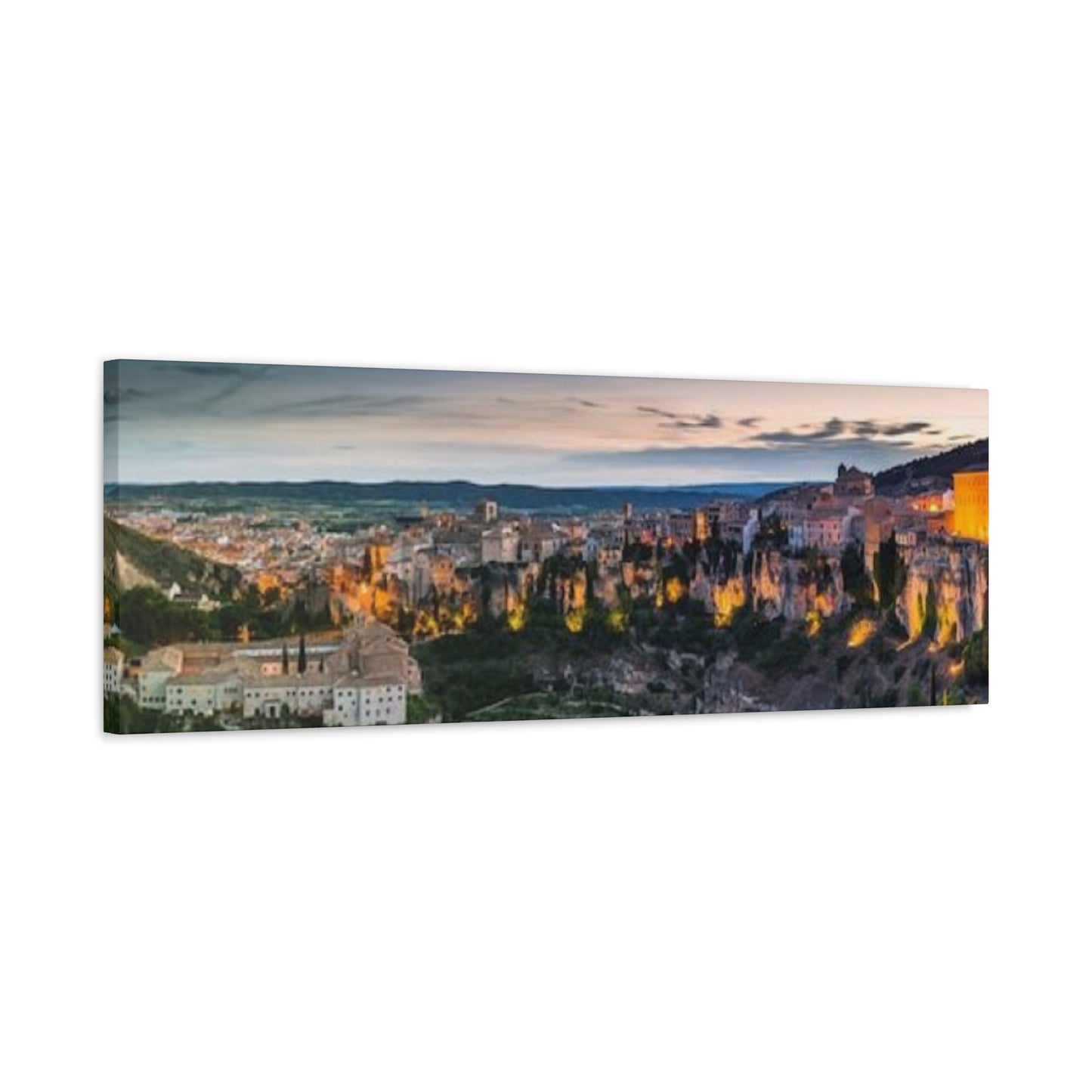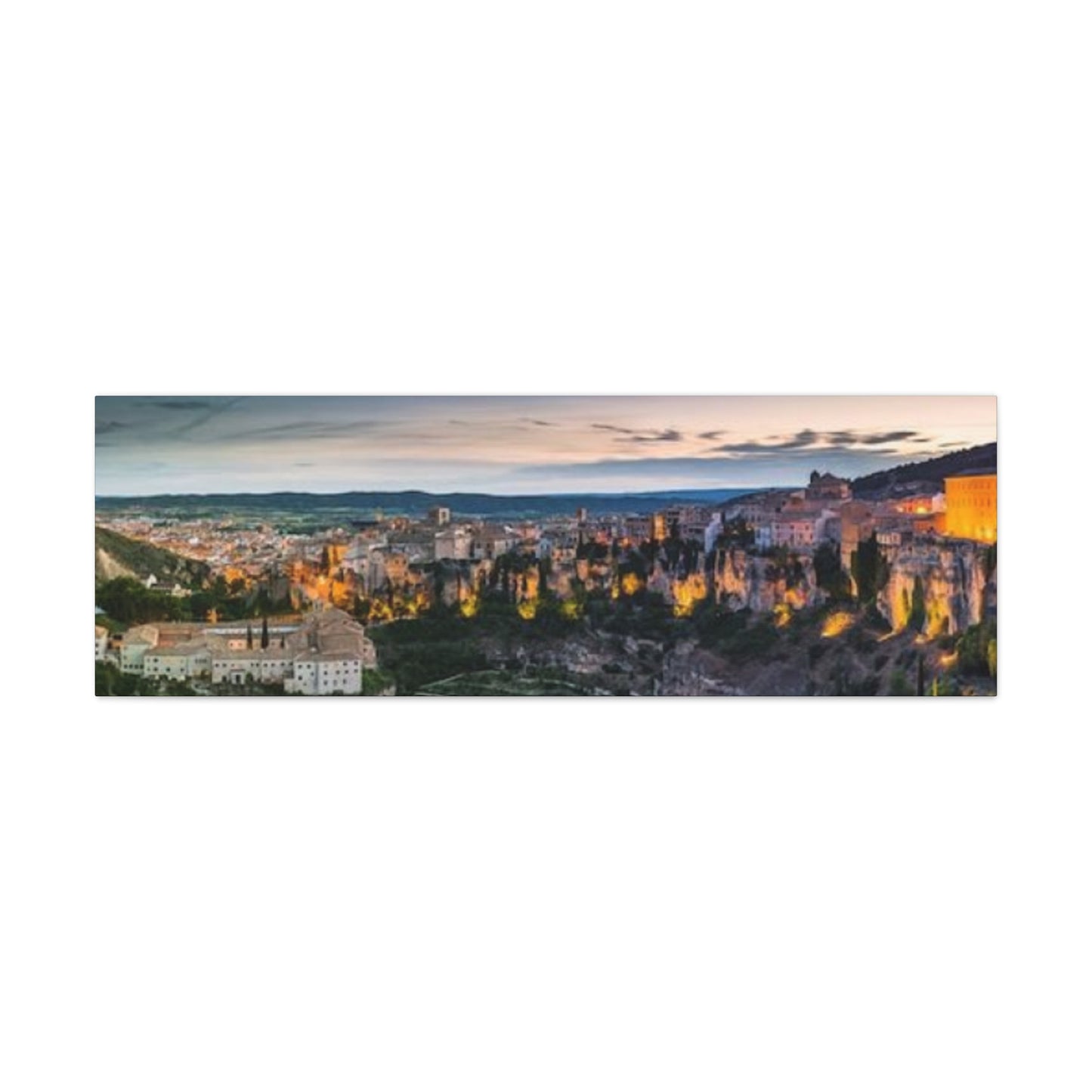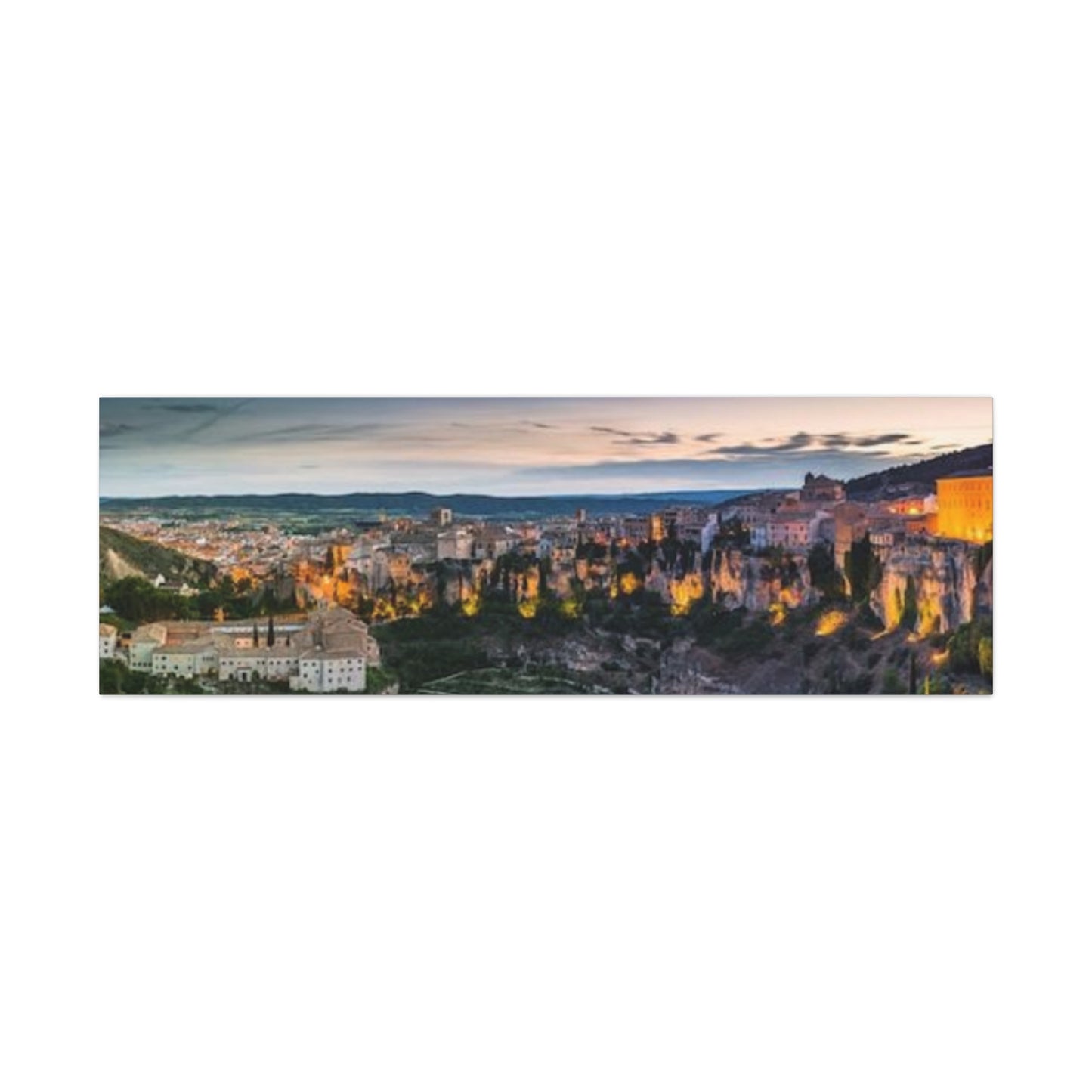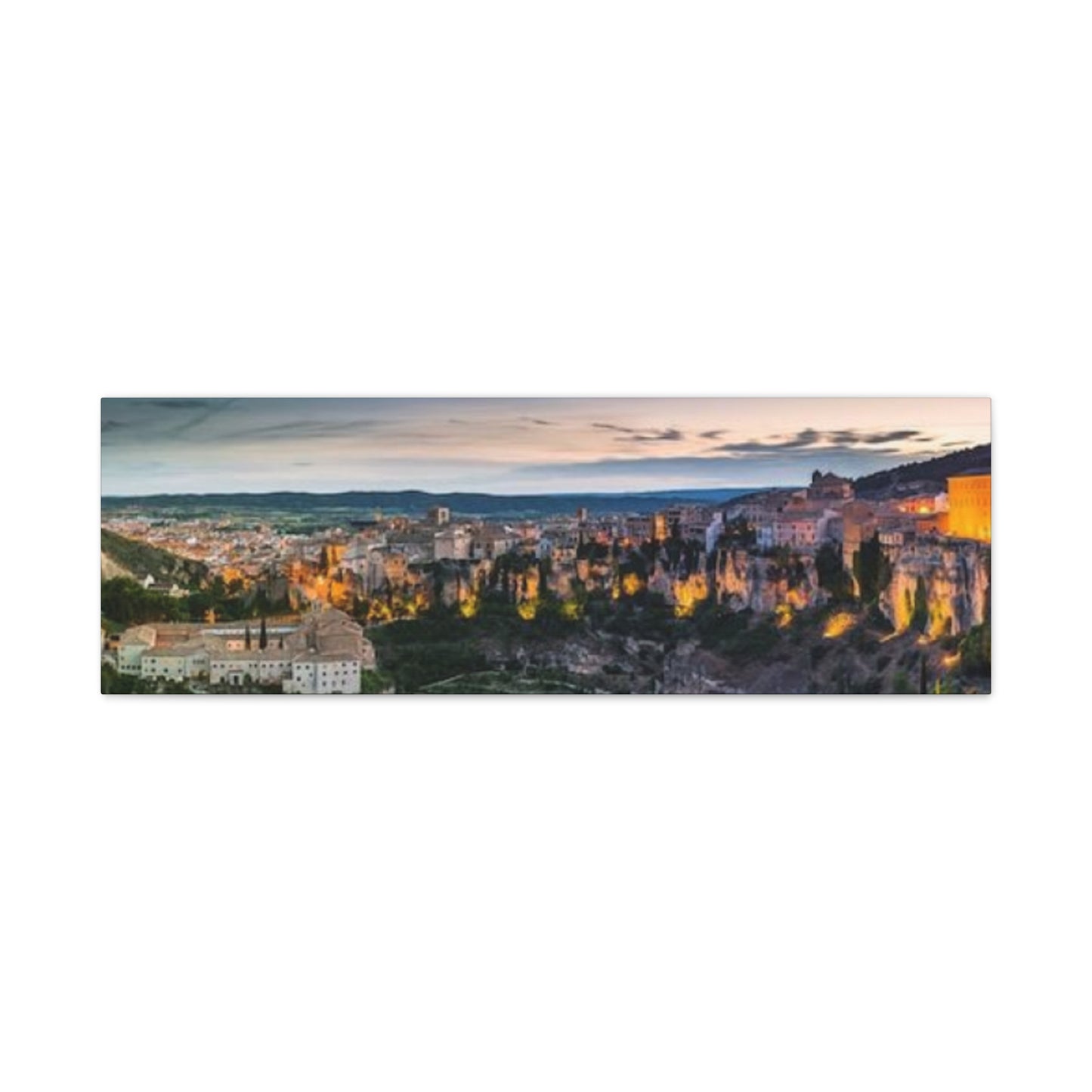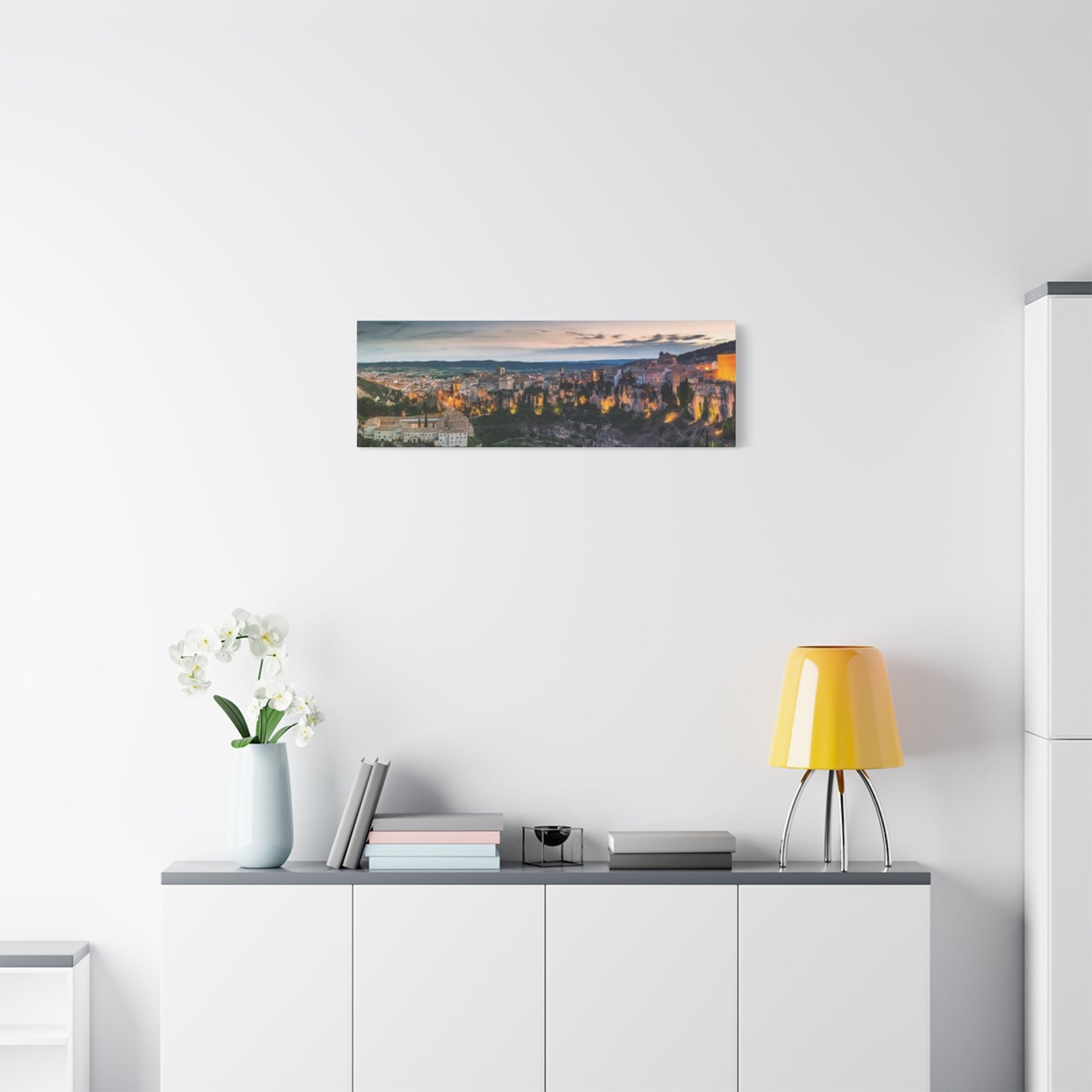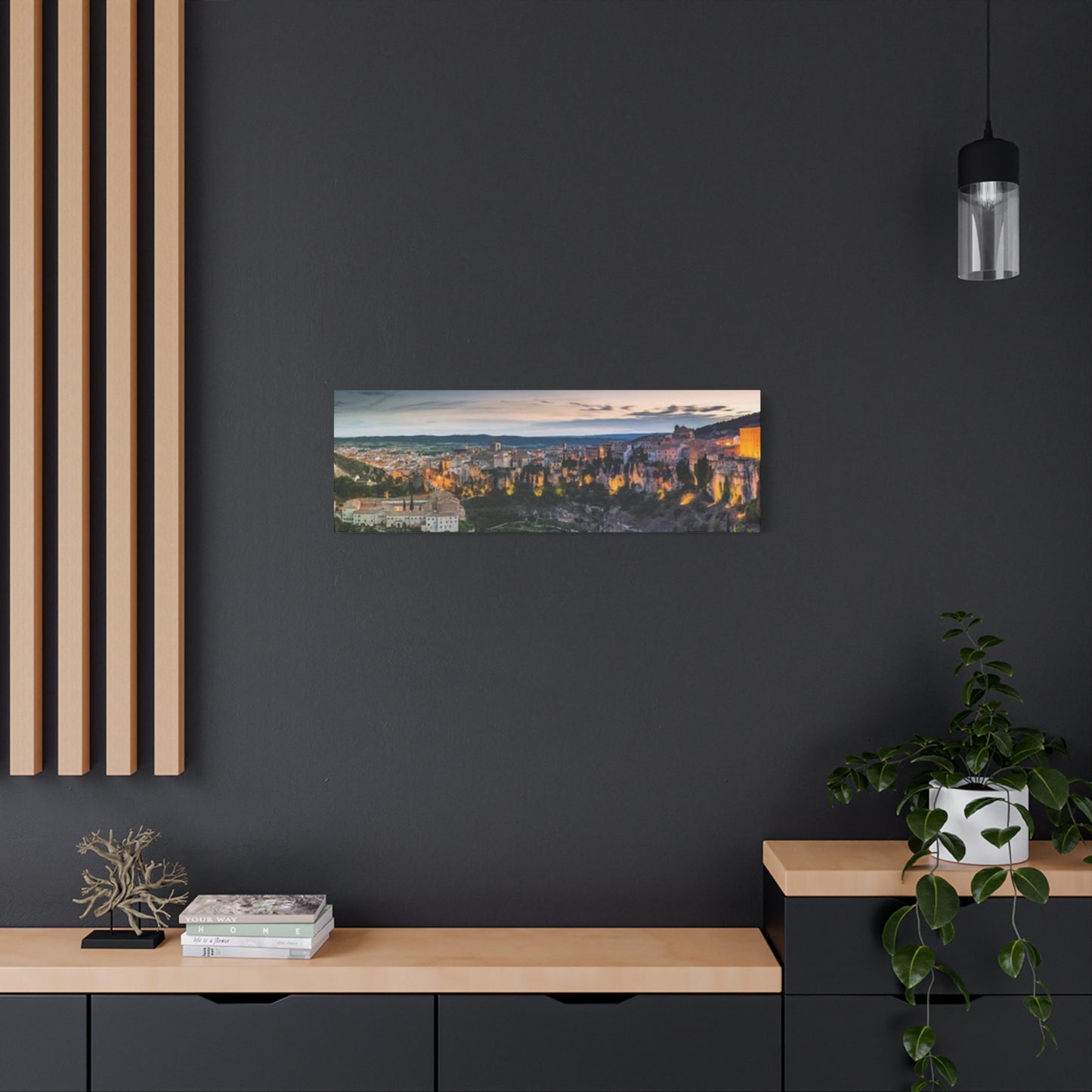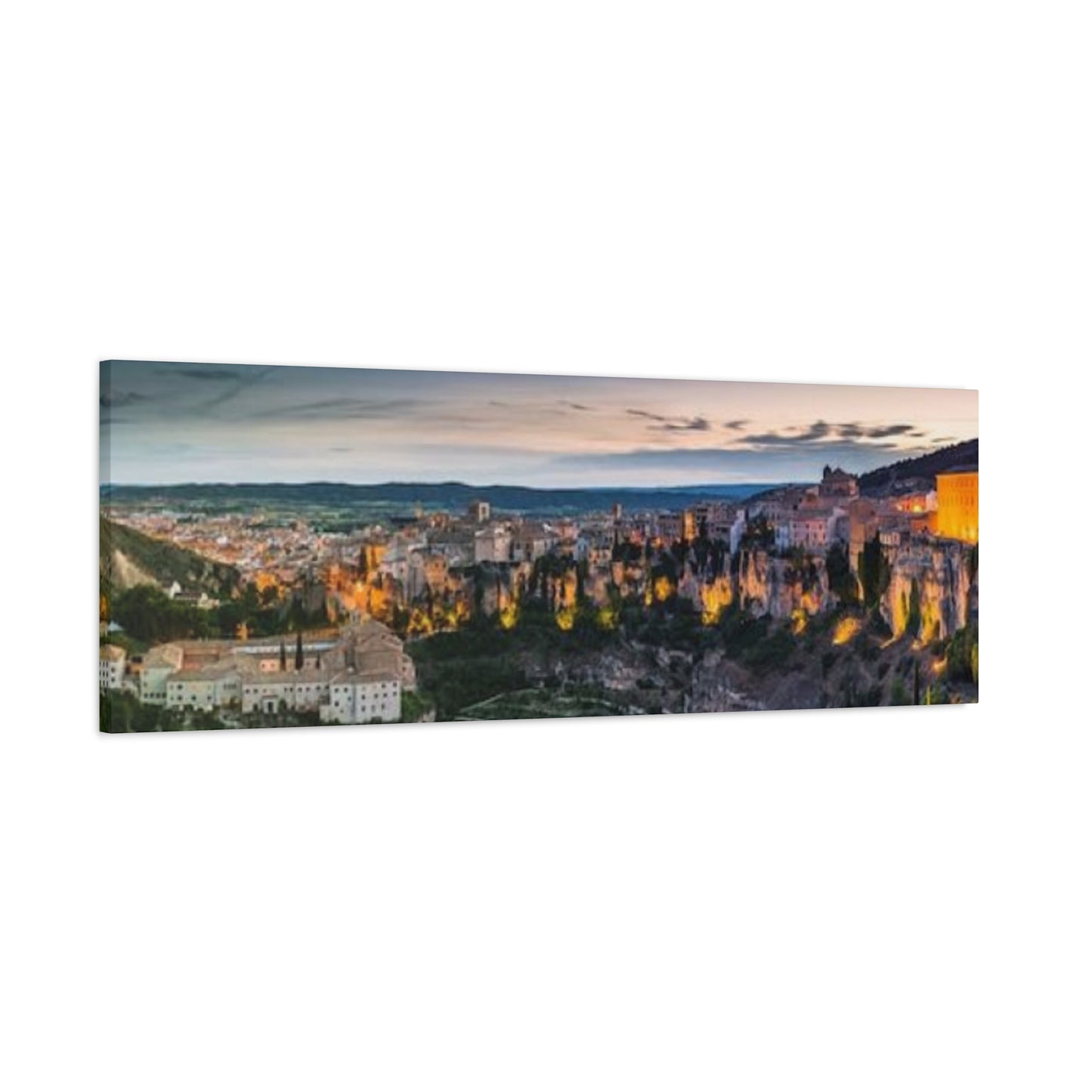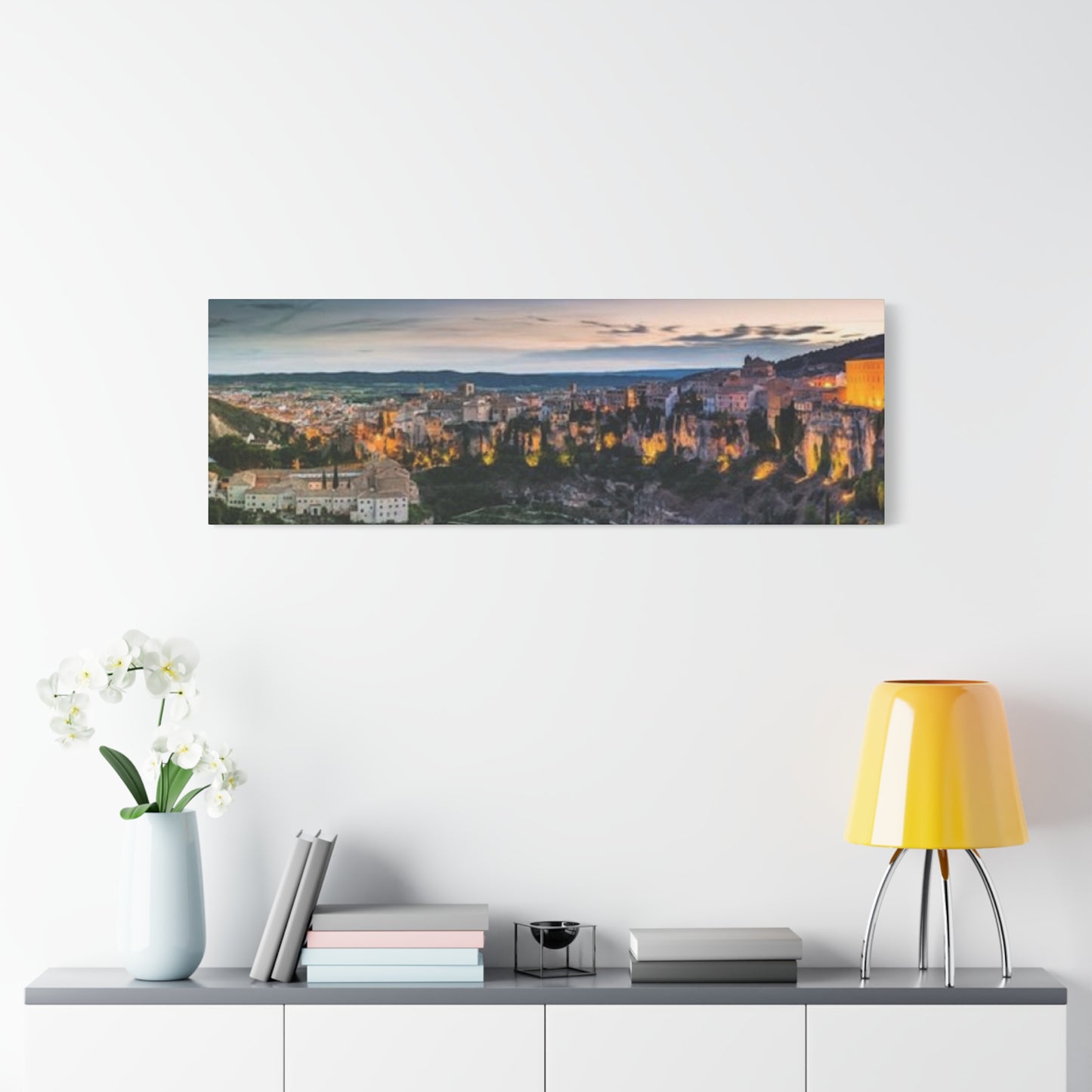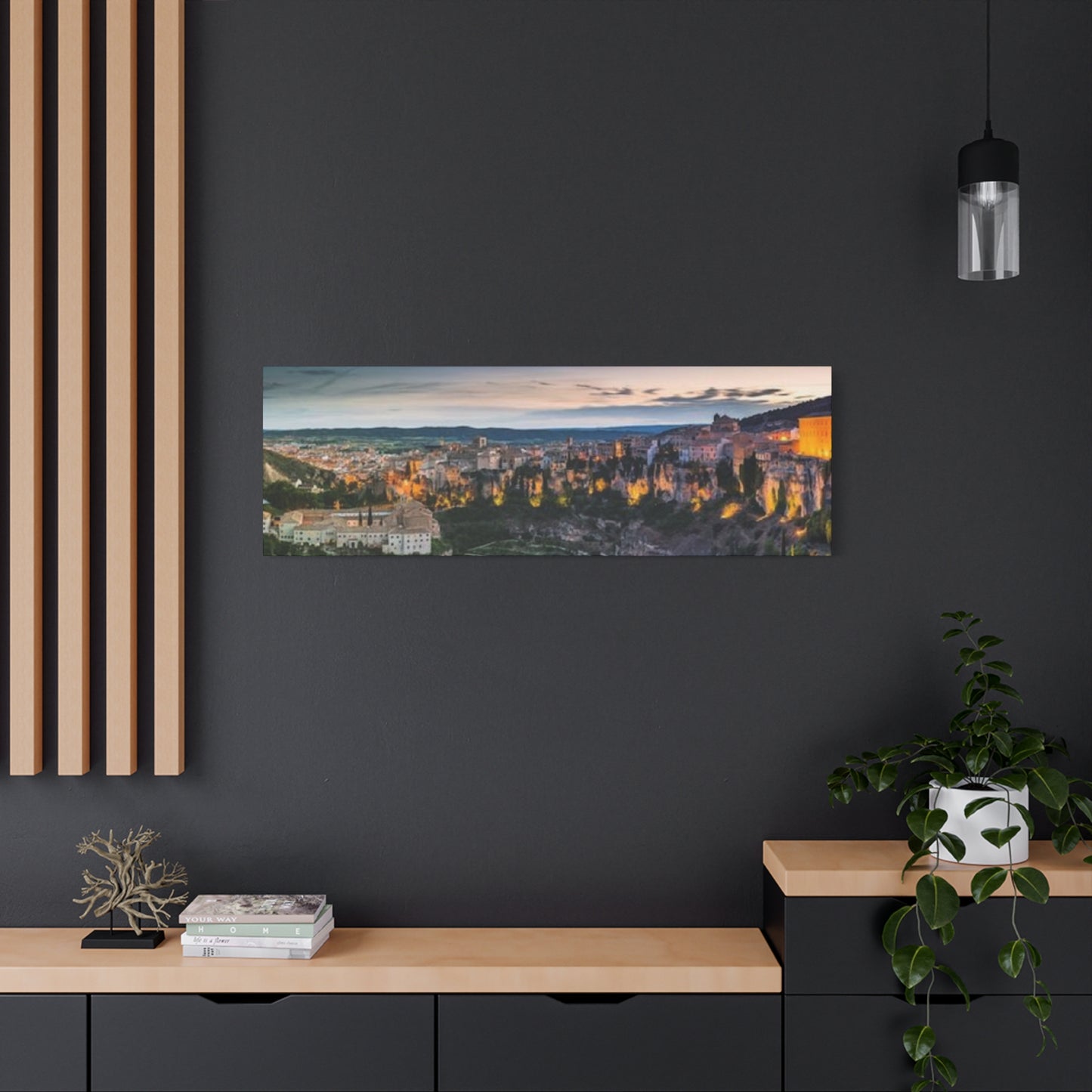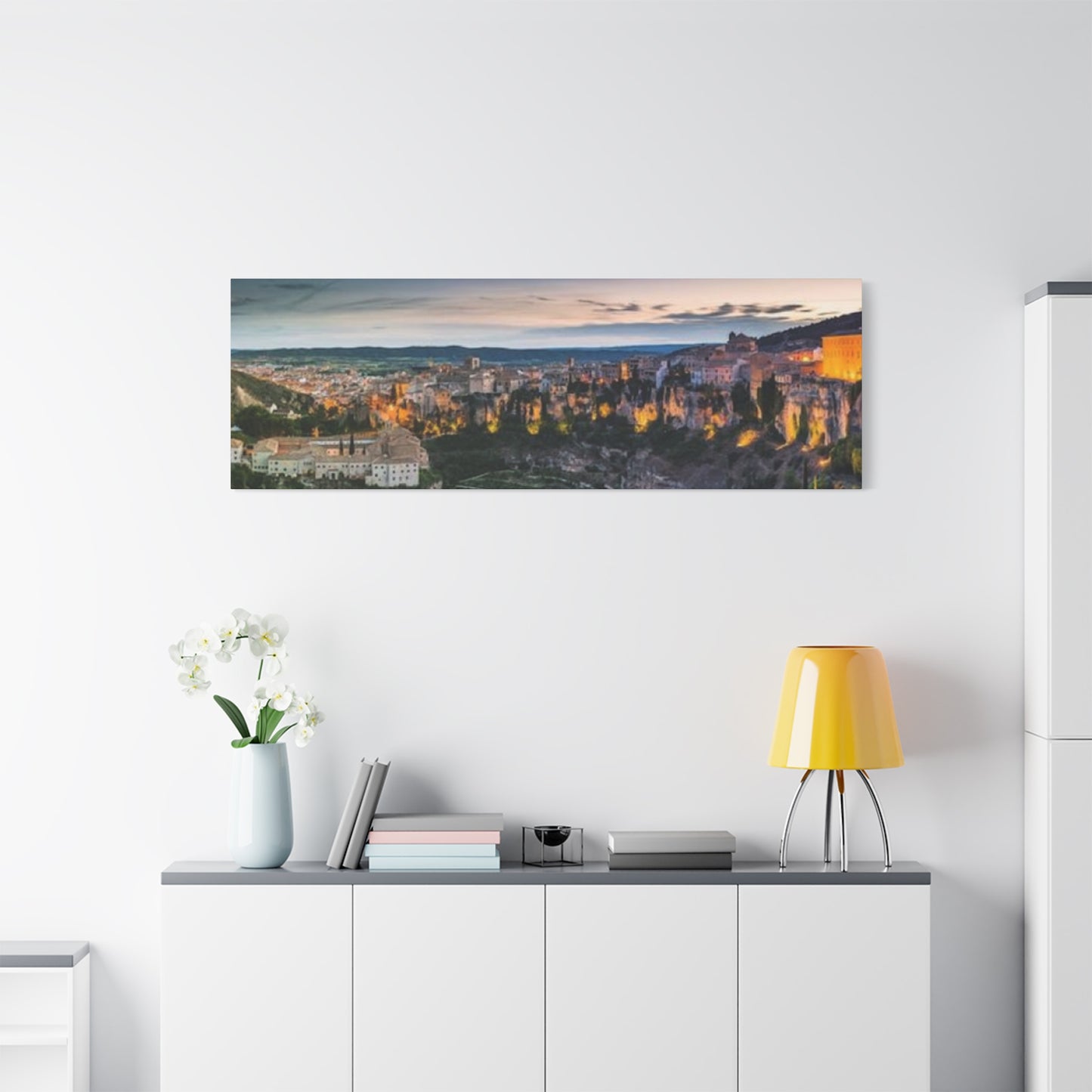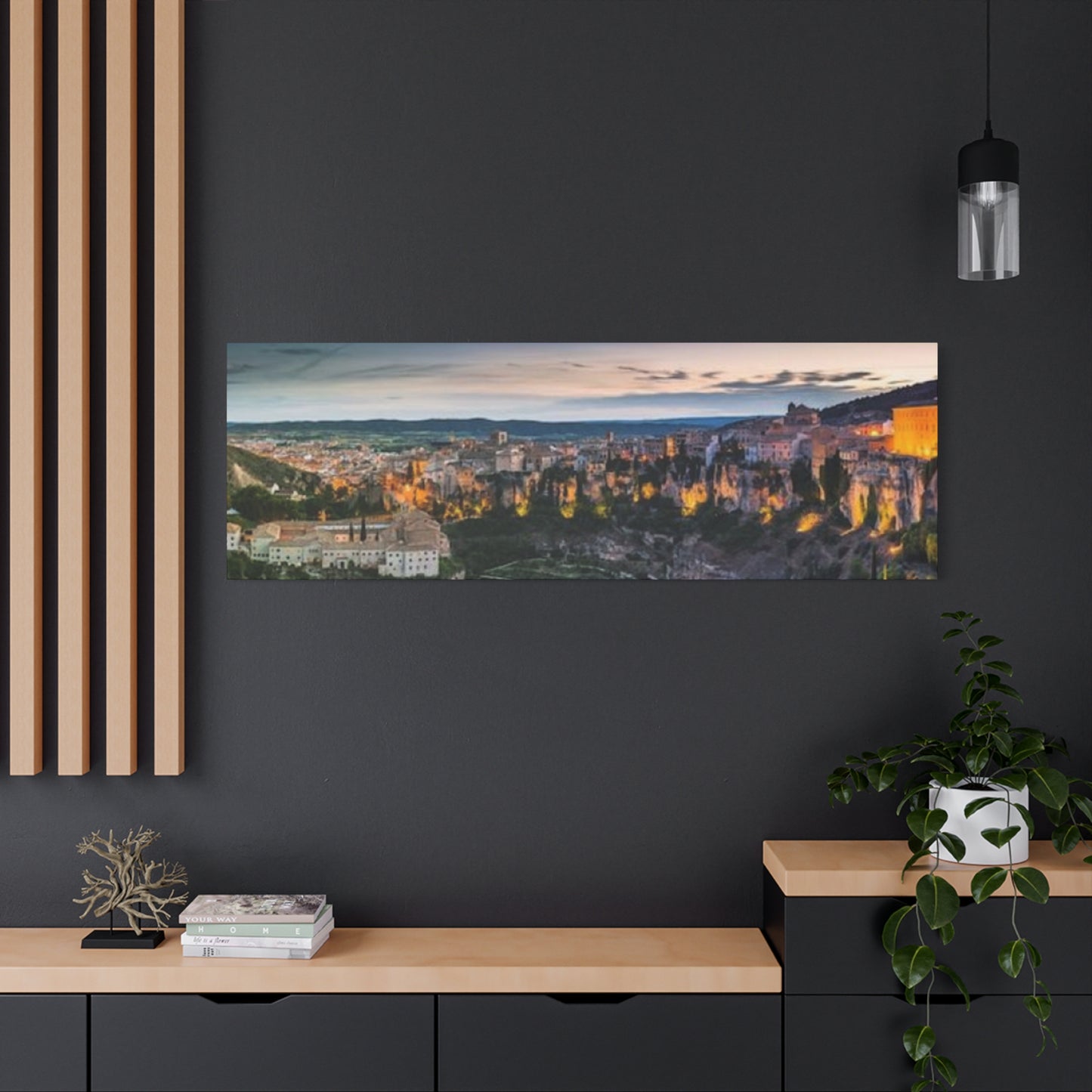Mountain View Panoramas: Elevate Your Home with Stunning Wall Art
The allure of cityscape from mountain view panoramas wall art lies in its unique ability to capture the harmonious relationship between human civilization and natural grandeur. These stunning visual compositions present urban environments from elevated perspectives, showcasing sprawling metropolitan areas against dramatic mountain backdrops. The elevated vantage point creates a sense of majesty and scale that traditional city photography simply cannot achieve.
Mountain view cityscapes offer viewers an almost godlike perspective of human achievement, displaying the intricate patterns of streets, buildings, and infrastructure that form the complex tapestry of modern urban life. The contrast between the organic curves of mountain ranges and the geometric precision of city planning creates a visual tension that captivates the eye and stimulates contemplation about humanity's place in the natural world.
These panoramic artworks serve as powerful focal points in residential and commercial environments, drawing viewers into expansive vistas that seem to extend the boundaries of any room. The depth and scale inherent in mountain view cityscapes create an illusion of expanded living areas, making even compact rooms feel more spacious and connected to the wider world.
The psychological impact of such imagery cannot be understated. Research in environmental psychology suggests that views of expansive landscapes, even in artistic representation, can reduce stress levels and promote feelings of well-being. The combination of natural mountain formations with the energy and dynamism of urban centers provides a balanced visual experience that satisfies both our need for connection to nature and our fascination with human progress and achievement.
Evolution of Mountain Cityscape Art Forms
The artistic tradition of depicting cities from elevated perspectives has ancient roots, dating back to medieval manuscripts and early Renaissance paintings. Artists have long been fascinated by the challenge of representing complex urban environments from bird's-eye views, using these elevated perspectives to convey power, prosperity, and human achievement. The development of linear perspective during the Renaissance period revolutionized how artists could accurately depict the receding planes and diminishing scale that characterize views from mountain vantage points.
During the 18th and 19th centuries, the Romantic movement embraced the sublime beauty of combining natural landscapes with human settlements. Artists like Caspar David Friedrich pioneered techniques for capturing the emotional resonance of vast panoramic views, establishing visual conventions that continue to influence contemporary cityscape art. The industrial revolution brought new subject matter as cities expanded and transformed, creating increasingly dramatic contrasts between natural and built environments.
The advent of photography in the mid-19th century provided artists with new tools for capturing mountain view cityscapes with unprecedented accuracy and detail. Early photographers climbed mountains and tall buildings to achieve the elevated perspectives that had previously been the domain of artistic imagination. These photographic pioneers established many of the compositional principles that continue to guide contemporary creators of cityscape panorama art.
The 20th century saw the emergence of aviation, which opened up entirely new possibilities for capturing urban landscapes from above. Aerial photography revealed cities in ways that had never been possible before, showing the full extent of urban sprawl against natural geographical features. This technological advancement profoundly influenced artistic interpretation of cityscape subjects, leading to increasingly sophisticated and detailed panoramic representations.
Modern digital photography and image processing techniques have further revolutionized the field, allowing artists to create highly detailed, color-corrected, and artistically enhanced versions of mountain view cityscapes. Contemporary artists can now combine multiple exposures, enhance dynamic range, and apply various artistic filters to create images that surpass what the human eye might observe from the same vantage point.
Artistic Techniques and Photographic Mastery
Creating compelling mountain view cityscape art requires mastery of numerous technical and artistic skills. Professional photographers and digital artists employ sophisticated equipment and techniques to capture the full grandeur of urban panoramas viewed from elevated mountain positions. Ultra-wide-angle lenses are essential for encompassing the broad sweep of cityscapes, while telephoto lenses can compress distant mountain ranges to create dramatic backdrops for urban foregrounds.
High dynamic range imaging techniques allow artists to capture both the bright highlights of illuminated buildings and the subtle details in shadowed areas of mountain terrain. This technical approach is crucial for mountain view cityscapes because these scenes typically contain extreme variations in lighting conditions, from bright urban areas to darker natural landscapes.
Color grading and digital enhancement play vital roles in creating visually striking cityscape art. Artists carefully balance the warm tones of artificial city lighting against the cooler hues of natural mountain environments, creating harmonious color palettes that enhance the emotional impact of the imagery. Selective color adjustment allows for emphasis of particular architectural features or natural elements within the broader panoramic composition.
Composition techniques specific to mountain view cityscapes include careful attention to the rule of thirds, leading lines created by roads and waterways, and the strategic placement of prominent architectural landmarks within the frame. The horizon line placement becomes particularly critical in these panoramic views, as it determines the relative emphasis between natural and urban elements in the final artwork.
Post-processing workflows for cityscape panoramas often involve combining multiple images through panoramic stitching techniques, allowing artists to create ultra-wide compositions that capture the full sweep of mountain-to-mountain urban vistas. Advanced blending modes and masking techniques ensure seamless integration of multiple source images while maintaining natural lighting transitions across the panoramic canvas.
Geographic Locations Renowned for Spectacular Urban Views
Certain geographic locations around the world have become legendary for their stunning mountain view cityscapes, attracting both professional artists and photography enthusiasts. Los Angeles, viewed from the Hollywood Hills or Mount Wilson, presents one of the most iconic urban panoramas, with the sprawling metropolitan area extending toward distant mountain ranges under California's distinctive atmospheric conditions.
Vancouver, British Columbia, offers extraordinary opportunities for capturing mountain view cityscapes, with the city's modern skyline dramatically framed by the North Shore Mountains and the Pacific Ocean. The combination of urban architecture, natural water features, and snow-capped peaks creates visually complex compositions that showcase the harmony between human development and pristine natural environments.
Rio de Janeiro provides perhaps the most dramatic example of mountain view cityscape art potential, with Sugarloaf Mountain and Corcovado offering elevated perspectives of one of the world's most visually striking cities. The interplay between urban beaches, modern architecture, and tropical mountain formations creates uniquely colorful and dynamic panoramic compositions.
Denver, Colorado, situated at the base of the Rocky Mountains, offers photographers and artists spectacular opportunities to capture the contrast between modern urban development and the towering peaks of the continental divide. The clear atmospheric conditions at high altitude create exceptional visibility and color saturation in mountain view cityscape imagery.
Cape Town, South Africa, presents extraordinary visual contrasts with Table Mountain providing dramatic elevation for viewing the city's distinctive architecture against the backdrop of the Atlantic Ocean and surrounding mountain ranges. The unique geological formations and Mediterranean climate create lighting conditions that are particularly favorable for creating stunning panoramic art.
Asian cities like Hong Kong, nestled among steep hills and mountain peaks, offer some of the world's most vertically dramatic urban landscapes. The density of high-rise architecture combined with the mountainous terrain creates layered compositions that reveal new details upon careful examination.
Contemporary Artistic Interpretations and Styles
Modern artists working with mountain view cityscape subjects employ diverse stylistic approaches that range from photorealistic representations to highly stylized interpretations. Hyperrealistic techniques focus on capturing every architectural detail and natural texture with precision that rivals or exceeds photographic accuracy. These approaches often emphasize the technological achievements represented by urban development while maintaining respect for the natural grandeur of mountain environments.
Impressionistic interpretations of cityscape panoramas emphasize mood and atmosphere over precise architectural details. Artists working in this style use color and brushwork to convey the emotional experience of viewing expansive urban vistas from mountain vantage points. The play of light across urban surfaces and natural terrain becomes the primary subject matter, with buildings and landscape features serving as vehicles for exploring color relationships and atmospheric effects.
Abstract approaches to mountain view cityscape art deconstruct the recognizable elements of urban and natural landscapes into geometric patterns and color fields. These interpretations focus on the underlying structural relationships between built and natural environments, revealing the mathematical patterns that govern both urban planning and natural geological formations.
Digital art techniques have opened entirely new possibilities for interpreting mountain view cityscapes. Artists can combine photographic source material with painted elements, create impossible perspectives that compress or expand geographical relationships, and apply color treatments that enhance the emotional impact of urban panoramic views. These digital approaches often push the boundaries of realistic representation while maintaining recognizable connections to actual geographic locations.
Mixed media approaches combine traditional artistic techniques with photographic elements, creating layered compositions that add textural interest and conceptual depth to mountain view cityscape art. These works often incorporate elements like maps, architectural drawings, or natural materials that relate to the specific geographic locations depicted in the primary imagery.
Color Theory and Atmospheric Perspective Principles
Understanding color theory is essential for creating effective mountain view cityscape art that accurately conveys the atmospheric conditions and lighting phenomena characteristic of elevated perspectives. The principle of atmospheric perspective causes distant objects to appear lighter, bluer, and less detailed than foreground elements, creating the sense of depth that makes panoramic cityscapes so visually compelling.
Warm color temperatures in urban areas contrast with the cooler tones typically found in natural mountain environments, creating natural color harmonies that artists can enhance through careful palette selection. The golden hour lighting conditions often preferred for cityscape photography create opportunities for dramatic color contrasts between illuminated urban surfaces and shadowed natural terrain.
Color saturation decreases with distance due to atmospheric effects, requiring artists to carefully modulate the intensity of colors throughout panoramic compositions. Foreground urban elements typically display higher color saturation, while distant mountain features appear more muted and blue-shifted. This natural phenomenon must be accurately represented to create convincing depth in mountain view cityscape art.
Temperature variations across different areas of panoramic compositions help establish spatial relationships and guide viewer attention through complex urban landscapes. Cool mountain backgrounds naturally recede, while warmer urban foregrounds advance toward the viewer, creating layered compositions that reveal themselves gradually upon extended viewing.
Complementary color relationships between natural and built environments create visual tension that energizes mountain view cityscape compositions. The interplay between warm artificial lighting and cool natural shadows generates dynamic color contrasts that prevent these large-scale compositions from appearing monotonous or static.
Technical Equipment and Professional Photography Methods
Professional creation of mountain view cityscape art requires specialized photographic equipment capable of handling the unique challenges presented by elevated perspectives and expansive vistas. Full-frame digital cameras with high resolution sensors provide the detail necessary for large-format prints that can reproduce the fine architectural and natural details visible from mountain vantage points.
Ultra-wide angle lenses, typically ranging from 14mm to 24mm in full-frame equivalent focal lengths, are essential for capturing the broad sweep of urban panoramas. These lenses must exhibit minimal distortion and maintain sharpness across the entire frame to ensure that both foreground urban details and distant mountain features appear crisp and well-defined.
Telephoto lenses serve complementary functions in mountain view cityscape photography, allowing artists to compress distant elements and create more intimate compositions within larger panoramic contexts. These longer focal lengths can isolate specific architectural clusters or natural features while maintaining the elevated perspective that characterizes mountain view imagery.
Tripod systems must provide exceptional stability for the long exposures often required in low-light conditions typical of dawn and dusk photography sessions. Carbon fiber tripods offer the best combination of stability and portability for mountain locations where equipment must be transported to remote vantage points.
Graduated neutral density filters help balance the extreme exposure differences between bright urban areas and darker natural landscapes. These filters allow photographers to capture detail in both highlight and shadow areas without resorting to high dynamic range techniques that may introduce unwanted artifacts.
Remote shutter release systems prevent camera shake during exposure, particularly important for the sharp detail required in large-format cityscape prints. Intervalometers enable time-lapse photography that can capture the changing light conditions and urban activity patterns that characterize different times of day.
Digital Processing and Enhancement Workflows
Contemporary mountain view cityscape art often relies heavily on digital processing techniques that enhance the natural beauty of urban panoramas while maintaining realistic appearances. Raw image processing forms the foundation of professional workflows, allowing artists to extract maximum detail and dynamic range from source photographs.
Color correction techniques ensure accurate reproduction of the subtle color variations found in atmospheric perspective effects. Careful attention to white balance adjustments helps maintain the natural color relationships between artificial urban lighting and natural daylight conditions typical of mountain view photography.
Graduated adjustments using digital masking techniques allow artists to selectively enhance different areas of panoramic compositions. These tools enable precise control over exposure, color saturation, and contrast adjustments that can emphasize particular architectural features or natural elements without affecting the overall balance of the composition.
Sharpening workflows must account for the varying detail requirements across different areas of mountain view cityscapes. Urban areas typically require aggressive sharpening to bring out architectural details, while natural mountain features may benefit from more subtle enhancement that maintains their organic appearance.
Noise reduction becomes particularly important in cityscape photography that often involves high ISO settings required for handheld shooting or extended depth of field. Advanced noise reduction algorithms can clean up digital artifacts while preserving the fine detail that makes mountain view cityscapes so visually engaging.
Panoramic stitching techniques enable the creation of ultra-wide compositions that capture broader vistas than possible with single exposures. These workflows require careful attention to exposure matching and perspective correction to create seamless final images that maintain natural appearance despite their technical complexity.
Printing Technologies for Large Format Display
The impressive scale inherent in mountain view cityscapes demands printing technologies capable of reproducing fine details and accurate colors at large sizes. Giclée printing using pigment-based inks on archival substrates provides the longevity and color accuracy required for gallery-quality cityscape art. These printing methods can reproduce the subtle atmospheric effects and color gradations essential for convincing mountain view panoramas.
Canvas printing offers textural interest that complements the organic elements present in mountain landscapes while providing sufficient detail resolution for urban architectural features. The texture of canvas substrates can enhance the artistic quality of cityscape images by adding a subtle tactile dimension that pure photographic prints may lack.
Metallic print substrates create stunning visual effects with mountain view cityscapes by enhancing the luminosity of artificial lighting and creating depth through subtle reflectivity variations across the image surface. These printing methods are particularly effective for night cityscape panoramas where artificial lighting plays a prominent role in the composition.
Acrylic mounting techniques provide contemporary display options that enhance the depth and clarity of mountain view cityscape art. The optical properties of acrylic substrates can intensify color saturation and create the impression of looking through windows at actual urban vistas.
Large format printers capable of producing seamless prints up to 60 inches or wider enable the creation of truly panoramic displays that can fill entire walls with mountain view cityscapes. These expansive prints create immersive viewing experiences that transport viewers to elevated mountain perspectives.
Color management workflows ensure accurate reproduction of the subtle atmospheric colors and lighting effects characteristic of mountain view photography. Professional color calibration of both display monitors and printing equipment maintains consistency throughout the creative and production process.
Lighting Conditions and Optimal Photography Times
The most spectacular mountain view cityscape art typically results from photography conducted during specific lighting conditions that enhance both natural and urban elements. The golden hour, occurring during the first and last hours of daylight, provides warm illumination that enhances architectural details while creating dramatic atmospheric effects in distant mountain ranges.
Blue hour photography, conducted during the twilight period after sunset, creates opportunities for capturing illuminated urban areas against naturally lit mountain silhouettes. This timing allows for balanced exposures that reveal detail in both artificial city lighting and natural landscape features without extreme contrast issues.
Dawn photography sessions often provide the clearest atmospheric conditions for mountain view cityscapes, as morning air tends to be less hazy and more stable than afternoon conditions. The cooler temperatures and reduced atmospheric turbulence typical of early morning create ideal conditions for capturing sharp details across expansive panoramic views.
Weather patterns significantly influence the quality of mountain view cityscape photography. High pressure systems typically produce the clear atmospheric conditions necessary for maximum visibility and color saturation. Conversely, certain cloud formations can add dramatic elements to panoramic compositions while potentially obscuring distant mountain features.
Seasonal variations create opportunities for capturing mountain view cityscapes under different atmospheric and lighting conditions. Winter photography may reveal snow-covered urban areas against white mountain backgrounds, while summer conditions often provide the clearest atmospheric visibility for distant landscape features.
Artificial lighting patterns in urban areas change throughout the evening hours, creating different compositional opportunities as various types of architectural illumination activate at different times. Understanding these lighting cycles enables photographers to plan sessions that capture optimal combinations of natural and artificial illumination.
Architectural Elements That Enhance Urban Panoramas
Successful mountain view cityscape art often depends on the presence of distinctive architectural elements that provide visual anchors and scale references within expansive panoramic compositions. Skyscrapers and high-rise towers create vertical elements that contrast with horizontal mountain ridgelines, adding dynamic tension to panoramic layouts.
Bridge structures frequently serve as leading lines that guide viewer attention through complex urban landscapes while providing elegant curved or angular forms that complement natural mountain contours. These infrastructure elements often become iconic focal points that define the character of specific cityscape locations.
Distinctive architectural landmarks help establish geographic identity within mountain view cityscapes, making otherwise anonymous urban areas immediately recognizable to viewers. These landmark structures often possess lighting schemes that make them particularly prominent in twilight and nighttime photography.
Road systems and transportation infrastructure create geometric patterns that reveal urban planning principles and provide structural elements that organize complex panoramic compositions. The curves of highways and the grid patterns of city streets add human scale references that help viewers comprehend the vast scale of mountain view cityscapes.
Waterfront developments and harbor areas add reflective surfaces that double the visual impact of illuminated architecture while providing transitional elements between urban and natural environments. These aquatic features often enhance the depth and complexity of panoramic compositions.
Industrial structures such as power plants, refineries, and manufacturing facilities contribute unique architectural forms that represent different aspects of urban development. While sometimes controversial as subject matter, these elements provide authentic documentation of complete urban environments rather than idealized versions that exclude industrial reality.
Natural Elements and Geological Features
The mountain ranges that provide elevated perspectives for cityscape art contribute their own visual elements that must be carefully integrated into successful panoramic compositions. Ridge lines create natural horizon elements that can be used to balance urban development in the foreground or middle ground of panoramic views.
Geological formations such as rock faces, cliff edges, and canyon walls add textural variety that contrasts with the smooth surfaces typical of urban architecture. These natural textures provide visual rest areas within complex panoramic compositions while maintaining connection to the natural environment.
Atmospheric effects created by mountain geography, including cloud formations, fog layers, and precipitation patterns, add dynamic elements that change the mood and character of cityscape panoramas. These weather phenomena can create dramatic backlighting effects or mysterious partial concealment of urban areas.
Vegetation patterns on mountain slopes contribute color and textural variations that change seasonally, providing opportunities for capturing the same cityscape locations under different natural conditions. The transition zones between natural vegetation and urban development often create particularly interesting compositional elements.
Water features such as mountain streams, lakes, and reservoirs add reflective elements that can mirror both natural and urban features within panoramic compositions. These aquatic elements often provide natural leading lines that connect different areas of complex cityscape panoramas.
Elevation changes within mountain terrain create opportunities for multiple perspective layers within single panoramic compositions, revealing different aspects of urban development at various distances and elevations. These varied viewpoints add complexity and visual interest that reward detailed examination.
Seasonal Variations and Weather Impact Photography
Mountain view cityscape art benefits enormously from the dramatic seasonal changes that affect both natural and urban environments. Winter conditions transform urban areas with snow cover while revealing the stark beauty of bare mountain peaks against clear winter skies. The contrast between warm artificial lighting and cold natural elements creates particularly striking visual effects.
Spring photography captures the renewal of natural vegetation on mountain slopes while documenting the consistent geometric patterns of urban development. The fresh green colors of new growth provide vibrant foreground and background elements that energize cityscape compositions with natural vitality.
Summer conditions often provide the clearest atmospheric visibility for mountain view photography, allowing maximum detail in distant landscape features. However, increased atmospheric haze during hot weather can create challenges that require careful timing and potentially longer focal lengths to maintain image clarity.
Autumn photography offers opportunities for capturing dramatic color contrasts between natural foliage and urban architecture. The warm colors of fall vegetation complement the artificial lighting typical of urban environments while providing seasonal interest that distinguishes autumn cityscapes from other times of year.
Storm systems create dynamic cloud formations and dramatic lighting effects that can transform ordinary mountain view cityscapes into extraordinary artistic subjects. Lightning, dramatic cloud structures, and unusual atmospheric lighting can add excitement and energy to urban panoramas.
Atmospheric inversion layers, common in mountain regions, create unique photographic opportunities where cities appear to float above cloud layers. These meteorological phenomena produce surreal effects that elevate routine cityscape photography into extraordinary artistic territory.
Cultural and Historical Significance of Urban Development
Mountain view cityscape art serves as historical documentation of urban development patterns and architectural evolution over time. These elevated perspectives reveal the expansion of human settlement into natural environments while documenting the changing relationship between civilization and geography.
Different cultural approaches to urban planning become apparent in mountain view cityscapes, with some cities showing organic growth patterns that follow natural terrain while others display geometric grids imposed upon natural landscapes. These planning philosophies reflect cultural values regarding the relationship between human development and natural environment.
Economic development patterns become visible in mountain view cityscapes through the clustering of different architectural types and the relative density of development in different areas. The vertical growth of central business districts contrasts with horizontal suburban expansion, revealing economic and social forces that shape urban form.
Transportation systems visible in mountain view cityscapes document the evolution of human mobility and the infrastructure required to connect urban areas with surrounding regions. Highway systems, railways, and airports represent major investments in connectivity that profoundly shape urban development patterns.
Environmental adaptation strategies become apparent in mountain view cityscapes as cities respond to specific geographical challenges such as earthquake risk, flooding potential, or extreme weather conditions. Architecture and infrastructure adapt to local conditions in ways that become apparent from elevated perspectives.
Cultural landmarks and public areas visible in mountain view cityscapes represent community values and civic priorities. Parks, sports facilities, educational institutions, and religious structures create patterns that reflect the social organization of urban communities.
Urban Landscape Art
The mountain view cityscape art market represents a significant economic sector that supports photographers, digital artists, print manufacturers, gallery operators, and numerous related businesses. High-quality panoramic cityscapes command premium prices due to the technical skill and equipment investment required for their creation.
Commercial applications of mountain view cityscape art include corporate lobbies, hospitality venues, medical facilities, and residential developments seeking to create sophisticated visual environments. These commercial markets provide steady demand for professionally produced urban panoramic art in various formats and sizes.
Tourism promotion relies heavily on mountain view cityscape imagery to attract visitors to specific destinations. Cities with spectacular mountain view opportunities invest significantly in professional photography and artistic interpretation to support their tourism marketing efforts.
Real estate development projects frequently commission mountain view cityscape art to enhance marketing materials and create aspirational associations with elevated lifestyle concepts. These commercial applications require specific compositional approaches that emphasize luxury and exclusivity.
Stock photography markets provide distribution channels for mountain view cityscape art, allowing artists to reach global markets through online licensing platforms. These markets require diverse content that represents various cities, seasons, and lighting conditions.
Educational institutions use mountain view cityscape art in geography, urban planning, and environmental studies curricula. These applications create specialized markets for imagery that clearly illustrates urban development principles and human-environment interactions.
Installation and Display Considerations for Large Art
Mountain view cityscape art requires careful consideration of viewing distance and wall dimensions to achieve optimal visual impact. Large panoramic prints need sufficient viewing distance to allow viewers to take in the full scope of the composition while maintaining the ability to examine architectural and natural details.
Lighting design for cityscape art must account for the varied tonal ranges typical of these compositions, from deep shadows in natural areas to bright highlights in urban regions. Museum-quality lighting systems prevent glare while ensuring even illumination across large panoramic surfaces.
Conservation concerns for mountain view cityscape prints include protection from ultraviolet light that can cause fading in organic substrates and certain ink types. Gallery-standard conservation practices ensure longevity for valuable artistic investments while maintaining color accuracy over time.
Framing considerations for panoramic cityscape art must balance the need for protection with the desire to maintain visual continuity across wide compositions. Contemporary framing approaches often minimize visual barriers between artwork and viewer while providing necessary physical protection.
Wall structural requirements for large format mountain view cityscape art include adequate support for heavy frames and substrates while ensuring secure mounting that protects valuable artwork investments. Professional installation services ensure proper handling and positioning of large panoramic pieces.
Environmental controls in display areas protect mountain view cityscape art from temperature and humidity fluctuations that can cause substrate expansion and contraction. These conservation measures are particularly important for large format pieces that are more susceptible to environmental stress.
Psychological and Emotional Effects of Panoramic Views
Research in environmental psychology demonstrates that views of expansive landscapes, including artistic representations, can significantly reduce stress levels and promote psychological well-being. Mountain view cityscape art provides these beneficial effects by creating the illusion of extended visual access to vast outdoor environments.
The sense of elevation and perspective provided by mountain view cityscapes can create feelings of empowerment and expanded awareness that many viewers find psychologically uplifting. These elevated perspectives may trigger positive associations with achievement, progress, and personal growth.
Color psychology plays an important role in the emotional impact of mountain view cityscape art. The cool blues and greens typical of natural mountain environments provide calming effects, while the warm colors of urban lighting create energy and excitement. The combination of these color temperatures creates balanced emotional experiences.
Spatial psychology research suggests that panoramic views can make viewers feel less confined and more connected to broader environments beyond their immediate surroundings. This effect can be particularly valuable in urban living situations where access to natural views may be limited.
Contemplative benefits of mountain view cityscape art include opportunities for meditation on the relationship between human achievement and natural grandeur. These compositions encourage reflection on themes of progress, sustainability, and humanity's place in the natural world.
Inspirational effects of mountain view cityscapes often relate to their representation of human aspiration and achievement. The evidence of civilization's ability to thrive in challenging geographical environments can provide motivational messages about overcoming obstacles and reaching elevated goals.
Creative Composition Techniques for Maximum Impact
Rule of thirds applications in mountain view cityscape art require careful consideration of multiple horizon lines and the placement of prominent architectural or natural features within the compositional grid. The elevated perspective typical of these views often creates multiple horizontal divisions that must be balanced for optimal visual harmony.
Leading line techniques in panoramic cityscapes utilize infrastructure elements such as highways, rivers, and ridge lines to guide viewer attention through complex compositions. These linear elements help organize sprawling urban environments into comprehensible visual narratives that reward extended viewing.
Depth creation through layered composition becomes particularly important in mountain view cityscapes where multiple planes of urban development and natural features must be clearly distinguished. Atmospheric perspective effects can be enhanced through careful exposure and color treatment to maximize the sense of three-dimensional depth.
Focal point establishment in panoramic compositions requires strategic placement of distinctive architectural or natural elements that serve as visual anchors within expansive views. These focal points prevent panoramic compositions from becoming overwhelming while providing entry points for detailed examination.
Balance considerations in mountain view cityscape art involve careful distribution of visual weight between natural and urban elements. The geometric precision of urban development must be balanced against the organic forms of natural landscapes to create harmonious compositions.
Scale relationships within mountain view cityscapes help viewers comprehend the vast dimensions involved in these elevated perspectives. Including recognizable objects such as vehicles, buildings, or natural features helps establish size references that make expansive views more comprehensible and emotionally engaging.
Market Trends and Collector Preferences
Contemporary art collectors increasingly seek mountain view cityscape pieces that combine technical excellence with unique artistic interpretation. The market shows strong preference for works that go beyond simple documentation to provide distinctive artistic vision and emotional impact.
Limited edition prints command premium prices in the mountain view cityscape market, particularly when accompanied by certificates of authenticity and detailed information about the creation process. Collectors value the exclusivity and investment potential of limited production runs from established artists.
Corporate collecting trends favor mountain view cityscape art that reflects sophisticated aesthetic sensibilities while avoiding controversial subject matter. These institutional buyers often seek pieces that enhance professional environments without creating distraction or generating negative associations.
Regional preferences in mountain view cityscape collecting often favor imagery of familiar geographic locations, creating strong markets for artists who specialize in specific metropolitan areas. Local pride and emotional connection drive purchasing decisions in these geographic markets.
Size preferences in the collector market tend toward larger formats that create immersive viewing experiences and serve as significant presence in residential or commercial environments. The panoramic format naturally lends itself to substantial wall installations that dominate viewing areas.
Artistic style preferences show growing interest in interpretive approaches that combine photographic accuracy with painterly or digital enhancement effects. Collectors seek pieces that transcend mere documentation to provide unique artistic perspectives on familiar urban environments.
Educational Applications in Urban Studies
Geography education benefits significantly from mountain view cityscape art that clearly illustrates urban development patterns, transportation systems, and human-environment interactions. These elevated perspectives provide comprehensive views that support understanding of complex geographic concepts.
Urban planning curricula utilize mountain view cityscape imagery to demonstrate various approaches to city development, zoning practices, and infrastructure integration. Students can observe the results of different planning philosophies through comparative analysis of various cityscape examples.
Environmental studies programs use mountain view cityscapes to illustrate the environmental impact of urban development and the relationship between human settlement and natural ecosystems. These images provide concrete examples of sustainability challenges and adaptation strategies.
Architectural education incorporates mountain view cityscape art to show how individual building designs contribute to broader urban environments. Students can observe how architectural styles and building heights create visual rhythms and establish neighborhood character within larger urban contexts.
Social studies applications include examination of economic development patterns, demographic distributions, and cultural landscape features visible in mountain view cityscapes. These elevated perspectives reveal social and economic forces that shape urban environments.
Art education programs use mountain view cityscape examples to teach composition principles, color theory, and technical photography skills. These complex subjects provide rich material for studying artistic techniques while developing appreciation for urban environmental aesthetics.
Technology Integration and Digital Innovation
Drone photography has revolutionized mountain view cityscape art by providing access to elevated perspectives that were previously impossible or extremely difficult to achieve. These unmanned aircraft systems enable artists to capture unique vantage points while maintaining safety and reducing equipment transportation challenges.
High dynamic range imaging technology allows capture of the extreme brightness variations typical in mountain view cityscapes, from deep shadows in natural areas to brilliant highlights in glass-covered urban architecture. Multiple exposure blending creates images with detail throughout the entire tonal range.
Panoramic stitching software enables creation of ultra-wide compositions that exceed the field of view possible with any single lens. These digital techniques allow artists to create sweeping vistas that capture the full grandeur of mountain view cityscapes while maintaining high resolution throughout the composition.
Color grading software provides precise control over the atmospheric effects and lighting relationships that define the mood and character of mountain view cityscape art. These digital tools allow artists to enhance natural phenomena while maintaining realistic appearance.
Virtual reality applications of mountain view cityscape art create immersive experiences that allow viewers to explore urban environments from elevated perspectives through interactive navigation. These technologies represent the cutting edge of experiential art presentation.
Artificial intelligence enhancement tools can improve image quality, reduce noise, and optimize sharpness in mountain view cityscape photography. These technologies enable artists to achieve technical excellence while focusing creative energy on compositional and aesthetic decisions.
Conservation and Environmental Documentation
Mountain view cityscape art serves important documentary functions by recording urban environments and natural landscapes that may change significantly over time due to development pressure, climate change, or natural disasters. These artistic records become valuable historical documents that preserve visual information about past environmental conditions.
Environmental monitoring applications use mountain view cityscape imagery to track changes in urban air quality, vegetation patterns, and development boundaries over extended time periods. Time-lapse sequences created from consistent vantage points provide valuable data for environmental research.
Climate change documentation through mountain view cityscape art can reveal changes in snow coverage, vegetation zones, and weather patterns that affect both natural and urban environments. These artistic records complement scientific monitoring while providing accessible visual communication of environmental changes.
Urban sprawl documentation shows the expansion of human development into natural areas over time through comparative mountain view imagery. These visual records help quantify the rate and character of urban growth while supporting planning and policy decisions.
Conservation advocacy benefits from mountain view cityscape art that demonstrates the beauty and value of natural areas threatened by development pressure. Artistic interpretation can communicate environmental values more effectively than purely scientific approaches.
Habitat preservation efforts use mountain view cityscape art to show the relationship between natural ecosystems and urban development, supporting arguments for maintaining green corridors and protecting wildlife habitat within metropolitan regions.
Future Directions and Emerging Opportunities
Augmented reality integration with mountain view cityscape art promises to create interactive experiences that allow viewers to access additional information about architectural features, historical development, or natural phenomena visible within panoramic compositions. These technologies will blur the boundaries between static art and interactive education.
Sustainable printing technologies are emerging that reduce the environmental impact of large format art production while maintaining the quality standards required for professional mountain view cityscape art. These innovations support environmentally conscious collecting and exhibition practices.
Global connectivity enables collaboration between artists working in different geographic regions to create comprehensive documentation of mountain view cityscapes worldwide. These collaborative projects can reveal universal patterns in urban development while celebrating regional differences.
Artificial intelligence applications in mountain view cityscape art may include automated composition analysis, optimal timing prediction for photography sessions, and style transfer techniques that apply artistic interpretations to photographic source material.
Climate change adaptation will create new opportunities for mountain view cityscape art as urban environments evolve to address environmental challenges. Artists will document these adaptation strategies while contributing to public understanding of urban sustainability initiatives.
Space-based imaging technology may eventually provide mountain view perspectives from orbital platforms, creating entirely new categories of elevated urban landscape art that show cities from previously impossible vantage points.
Professional Development for Cityscape Artists
Technical skill development for mountain view cityscape artists requires mastery of specialized photographic equipment, digital processing workflows, and artistic composition principles. Professional education programs and workshops provide structured learning opportunities for developing these complex skill sets.
Business development for cityscape artists includes understanding market segments, pricing strategies, and distribution channels that serve different collector categories and commercial applications. Successful artists must balance artistic vision with commercial viability to sustain professional careers.
Portfolio development strategies for mountain view cityscape artists emphasize diversity of geographic locations, seasonal variations, and artistic approaches while maintaining consistent quality and distinctive personal style. Professional portfolios must demonstrate both technical competence and artistic vision.
Professional networking within the mountain view cityscape art community includes participation in photography organizations, gallery relationships, and collaborative projects that provide exposure and learning opportunities. These professional connections support career development and artistic growth.
Continuing education in rapidly evolving digital technologies ensures that mountain view cityscape artists maintain current technical skills while exploring new creative possibilities. Professional development must balance traditional artistic principles with emerging technological capabilities.
Market research and trend analysis help mountain view cityscape artists make informed decisions about subject matter, artistic approaches, and business strategies. Understanding collector preferences and market dynamics supports sustainable professional practice.
International Perspectives on Urban Landscape Art
Cultural variations in mountain view cityscape art reflect different aesthetic traditions, philosophical approaches to nature-culture relationships, and artistic techniques developed in various geographic regions. These international perspectives enrich the global understanding of urban landscape art while celebrating regional diversity.
European traditions in urban landscape art emphasize historical continuity and architectural heritage, often focusing on the relationship between ancient settlements and natural geography. These perspectives contribute sophisticated understanding of how human communities adapt to geographic constraints over extended time periods.
Asian approaches to mountain view cityscape art often incorporate philosophical concepts about harmony between human development and natural forces. These cultural perspectives provide alternative frameworks for understanding the aesthetic and spiritual dimensions of urban landscape art.
North American mountain view cityscape art frequently celebrates themes of progress, expansion, and technological achievement while acknowledging environmental concerns and conservation values. These cultural perspectives reflect complex relationships between development aspirations and environmental consciousness.
Latin American contributions to mountain view cityscape art emphasize vibrant colors, dynamic compositions, and the integration of natural and cultural elements within urban environments. These artistic traditions provide energetic and optimistic perspectives on urban development.
African interpretations of mountain view cityscape art document rapidly changing urban environments while maintaining connection to traditional cultural values and artistic techniques. These perspectives contribute important documentation of global urbanization processes.
Conclusion
Mountain view cityscape art represents one of the most compelling and technically demanding genres in contemporary visual arts, combining the grandeur of natural landscapes with the complexity and energy of urban environments. This unique artistic category requires mastery of sophisticated technical skills, as artists balance the delicate interplay between nature and architecture.
Through skillful use of composition, color, and texture, these artworks not only capture breathtaking vistas but also evoke a profound sense of place and atmosphere. By blending the serenity of mountains with the vibrant pulse of city life, mountain view cityscape art offers a rich, immersive experience that reflects both the beauty and tension inherent in our modern world. As such, it stands as a testament to the evolving nature of contemporary visual arts, inviting viewers to reconsider their relationship with the spaces they inhabit.













